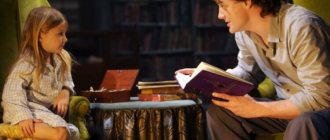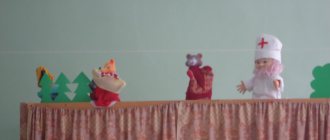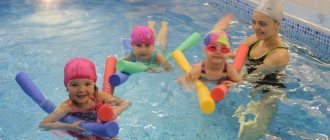Organization of a walk. Themed walks with preschoolers. article on the topic
Organization of a walk. Themed walks with preschoolers.
In the educational process, an important element in the daily routine is walking with children. The main task of the teacher when conducting walks is to provide active, meaningful, varied and interesting activities for children.
Traditionally, a walk includes such components as organizing children’s observations of natural phenomena (flora and fauna, inanimate nature); various games; work activity; sports exercises and independent activities of children according to their choice and interests. In this case, it is necessary to provide for a uniform alternation of calm and motor activity, distribution of physical activity during the entire walk.
To ensure that walks are varied and interesting for children, educators plan their content daily, including both the educational component and the children’s independent activities. Independent and joint activities with peers presuppose the availability of a variety of playing materials and equipment, the creation of various flexible subject-based play tools in the kindergarten area.
When planning a walk, the teacher must take into account many factors: weather conditions, the age of the children and their cognitive interests, available material, the topic of the previous lesson. It is necessary to provide for the possibility of a healing effect not only physically, but also mentally. For a child’s body, a properly organized walk can be the most accessible means of hardening.
The basic requirements that must be observed when organizing walks are defined in the relevant regulatory documents.
The joint activity of an adult with children during a walk is especially pronounced, since it is here that the child closely communicates with the teacher in all types of activities.
For a child, the educational process makes sense if it is built in the logic of activity. Therefore, the educational component of a walk is always connected with any type of children’s activity (play, communication, work, motor, cognitive-research, musical-art, productive) without its strict regulation.
It is clear that the leading play activity, through which the child learns about the world and organically develops, has a special role during a walk. Game forms of education can be in an individual, subgroup or frontal form of organizing work with students. Motor activity during a walk is combined with play, but at the same time the teacher is obliged to regulate the load by monitoring the condition of the children.
Modern requirements for updating the educational process suggest making walks as diverse as possible in content and organization.
In the methodological literature and individual regulatory documents, one can find confirmation that in addition to the traditional structure of walks with children that have developed over the years, thematic walks can be held, built on the principle of dominance of the type of children's activity or that are a continuation of the theme of the day in the educational process.
The authors of the guide “Themed Walks in Kindergarten” offer five types of themed walks:
walks and hikes;
entertaining walks with a character;
walk-events;
sports walks;
walks are labor actions.
Hiking is an organized type of activity, during which health-improving tasks are solved, motor skills and physical qualities of children are improved, their cognitive needs are satisfied, and love and aesthetic attitude towards nature are fostered. They should be carried out with children of older preschool age. The optimal number of such walks is 2-3 per year. We believe that if these walks are carried out frequently, they will lose their attractiveness and children’s interest in them will decrease.
Entertaining walks with the character are aimed at emotional and psychological relief for children, creating a positive emotional background, and satisfying children’s needs for physical activity. The forms of their organization can be diverse and variable, since they depend not only on the goals and objectives set, but also on the thematic focus and semantic richness.
Walking with a character is good for motivating children for a certain type of activity; the character helps to interest all the children in the group, attract them to joint play activities, observation, and work.
Walk-events are dedicated to a specific theme (Cosmonautics Day, Defender of the Fatherland Day, Victory Day, City Day, Knowledge Day, etc.) or an event that occurred in kindergarten (a new play complex was brought and installed, sports equipment was updated, sand was updated in the sandboxes, etc. .).
An event walk (thematic walk) helps the teacher once again draw children’s attention to an important event, clarify their knowledge and perception of a certain topic.
Sports walks are aimed at improving health, preventing fatigue, physical and mental development, and optimizing the physical activity of children. In sports walks, various types of children's activities are united by a sports theme.
When properly organized, these walks have a hardening effect on the body in natural conditions. They help increase the level of physical fitness of preschool children. The emphasis in such walks is on the formation of physical qualities, nurturing interest in sports and a healthy lifestyle.
These walks promote mental, moral, aesthetic education and develop the curiosity of preschoolers.
In walks and labor actions, labor assignments for children predominate, including them in forms of work that are different in organization in accordance with the season and weather conditions.
On walks associated with work activities, children develop an understanding that work in nature is not a game or entertainment, but a serious activity. The teacher brings them to an understanding of the need for such work, fosters a desire to participate in the work of caring for plants, feeding birds, and cleaning the area (raking snow, cleaning the veranda from sand and leaves).
On such walks, children learn to work in a team, together. The result of labor is the result of the joint work of everyone.
Bibliography:
- K.Yu. Belaya, E.A. Karalashvili, L.I. Pavlova and others. Themed walks in kindergarten. M.: Perspective, 2013
Progress of the game:
All the birds are playing, one child is an owl, which is located on the side of the playground. On the signal "day"
the birds fly away, flap their wings, and peck at the grains.
At the signal “night”
everyone stops and stands motionless.
An owl flies out, looks out for those who move and takes them into the nest. in 15-20 seconds. “day”
signal is given again , the owl flies to the nest, and the children - birds fly around the playground.
2 week
1. Conversation “On the couch or on a walk ?”
Goals: Continue to communicate the health benefits of an active lifestyle.
2. Presentation “Olympic Games”
Objectives: To form in children ideas about the Olympic Games, in which peoples from all over the world participate. Introduce children to the history of the Olympic movement. To foster patriotic feelings, pride for your city, your country and your people; To create the need for systematic physical exercise and sports.
3. Reading the Story “Squirrel and Tamara”
3. week
1. Conversation “What to wear?”
Objectives: listen to children’s opinions on how to dress for a walk depending on the weather outside
2. Folder moving “Ball Games”
Information for parents
3. Memorization of P. And “Tag”
Goal: to teach children to run around the playground in all directions, with acceleration, to consolidate the ability to act on a signal. Develop agility and speed.
Walking with children in summer
Sandbox game
When going for a walk, take with you a bag of accessories for playing in the sandbox. You can come up with a lot of activities with sand. For example, play a chef and prepare dishes, become a driver and build roads, garages, be a builder and build sand castles.
To make the sand stick better, take water with you. It’s good that there are a lot of bright sand accessories on sale today. Play in the sandbox should be under the supervision of adults, who set the direction for children's play. This summer activity is definitely educational, as it trains motor skills and calms children of any age.
Work in the garden
If you, your relatives or friends have a summer cottage, then give your child one or more beds at his disposal. Let him take care of the plants, and you give all the necessary instructions and provide the tools. The baby will love watching the fruits ripen, picking and eating them.
Farming is not a walk or a game, but something more; this activity is very captivating for young children. The child will thank you for this unique experience. For example, zucchini, radishes and cucumbers quickly grow from seeds. Maybe the child will want to grow tomatoes, strawberries, wild strawberries. Try planting flowers such as nasturtium, matthiola, calendula.
Search for stones
Children will love looking for beautiful stones so they can paint them at home. You can create patterns or see what the stones look like and add decor based on that. Paint the collected stones at home, and if you come across a huge stone, you can paint it right on the spot with paints or crayons.
Search games
Summer is a great time to play pirates, explorers or treasure hunters. Hide the treasure and challenge your children to find it using a map, a plan, or your clues such as cold and hot. You don’t even have to go beyond the yard of your house, this territory will be enough.
Treasure hunting is a game for a walk in a preschool or with your parents. Adults find it too easy, but for children it is a serious task that forces the brain to work hard. The event teaches the child how to navigate on a map and gives many useful skills.
Study of insects
In summer you will have a unique opportunity to study insects in their natural habitat. Take time and go out on the lawn in good weather with a large magnifying glass. You will definitely meet many interesting insects. Let the child see how a beetle behaves on a flower petal, how a caterpillar moves, how ants work. After a walk, it’s good to draw or sculpt the facts you saw from plasticine.
Natural bracelet
If nothing comes to your mind or you have already tried all the educational activities in nature, then make a quick bracelet. The child will love to create on his own. You need to make a bracelet for your hand from wide tape. Place the adhesive tape so that the adhesive side is on the outside of your wrist.
The child’s task is to decorate the bracelet from natural materials. For example, glue blades of grass, petals, pebbles, bark, sand. The entertainment seems very simple, but it really captivates and develops the child.
Study of the flora
When going for a walk, tell your child that a tour of the plant world is about to begin. While walking along the streets and parks, name the trees and teach your child to recognize them by their leaf shape, trunk and general appearance.
For example, indicate that this is a birch tree and show a birch leaf, describe the color of the trunk and the shape of the crown. You can also study herbs, flowers in flower beds and in the field, shrubs, everything that is found in your area. Give your child a task - to collect a beautiful bouquet from a large number of different flowers.
Classics on the asphalt
In the summer you simply must practice the classics. Your task is to draw numbers on the asphalt in any order. They can be in cells or circles, located close or at a distance from each other, as you like. This is not just hopscotch, but learning addition and subtraction.
Think of a simple example like one plus two and the child has to jump to the correct section, which in this case is three. In a similar way, you can learn the alphabet and learn to read short words. At first, the child will act on your prompt, but after some time he will remember everything you said and begin to guess the results of the examples, letters and words on his own.
Free walk
In summer you can walk for a long time, the main thing is to take a hat and water with you. Free walking involves the child setting the direction. Ask him where he wants to go and follow him. When the baby decides for himself, his interest in research will definitely awaken and you will be able to tell him about what he will be interested in.
For example, you can draw on the ground or in the sand, watch animals, look at clouds, and talk about nature. Sing songs, write and read poems. There is nothing better than casual positive communication; it also develops a child well. Ask more questions, answer your child’s questions in detail.
Soap bubbles show
Summer is a great time for a fun outdoor activity. Organize your own soap bubble show and children's joy will know no bounds. Don't forget to take your camera with you to capture such beauty. Buy several varieties of soap bubbles.
There are small and huge jars, devices with many holes. As a result, you can get many different bubbles, including the size of a human being. The bubble show is more like an entertaining walk, but it also has an educational aspect. It is useful for young children to learn how to blow soap bubbles themselves, as this activity acts like articulatory gymnastics and promotes speech development.
soap bubbles in summer
Walking with children in winter
Drawing in the snow
A very unexpected and fun activity is to paint on the snow. Try to draw a rainbow. This activity will help you learn colors and hone your artistic skills. Drawing in the snow is more fun than you think.
Skiing from the mountains
Make it your goal to explore as many snowy mountains in the area as possible, armed with your ski gear. Then you will be surprised how enthusiastically your child will share his impressions of different slides. Perhaps sliding down a slide seems like a frivolous activity to you, but for a child it is a real winter adventure.
Snowmen
The best winter fun is making a big snowman in a group. The child will be happy to roll snow globes and decorate the sculpture. While working, distribute responsibilities and actively discuss what you are doing. This communication is very productive for the child, it has a positive effect on his development and emotional state, and brings him closer to his parent.
Go ahead and build a whole family of snowmen. Or make snow cakes using molds. Color the cakes with paints. When you get tired of making snowmen, make a target and throw snow balls at it, your child will also love it.
building a snowman in winter
Walking with children in spring
Spring in the park
When spring comes, children can only feel it while walking. They will enjoy walking in nature and celebrating the signs of spring. For example, it is interesting to measure puddles with a ruler or boots, fill puddles with snow, study trees, widen or block streams, and launch homemade or purchased boats along them.
Talk about how our nature wakes up after winter, track all the changes in the park or outside the city. You can have fun on the rides or just walk down the street with a turntable that will spin in the direction of the wind. And at home after your walk, draw spring.
Studying traffic rules
Walk around the city with your children and make it your goal to explain to them as many aspects of traffic rules as possible. Talk in language accessible to the child, ask questions and tell various little things. Let the children observe how transport moves and how pedestrians behave.
Talk about traffic lights, traffic controllers, zebra crossings and road signs. Don't forget to reinforce the material with home games and drawings.
Active walk
In spring, children want to move and walk more, so it's time to get out your bicycles, balance bikes, roller skates, scooters, etc. Children aged 6-7 years old will enjoy riding a hoverboard. Your task is to drive around the neighborhood until the child gets tired.
On this day you are guaranteed a sea of new emotions, good physical exercise, excellent appetite and a restful sleep for your child. Riding on children's transport promotes the rapid growth of a child, improves his mood and helps him develop harmoniously.
If you don’t have a vehicle or don’t currently have the desire to ride it, then take a ball for a walk and master a few games with this apparatus.
It’s also a good idea to stock up on a set of crayons and draw on the asphalt. Such a walk will remind you that there will be no more snow and cold, summer is approaching. If the child does not know what to draw, offer to circle the shadow cast by a person or any object.
bike ride in spring





